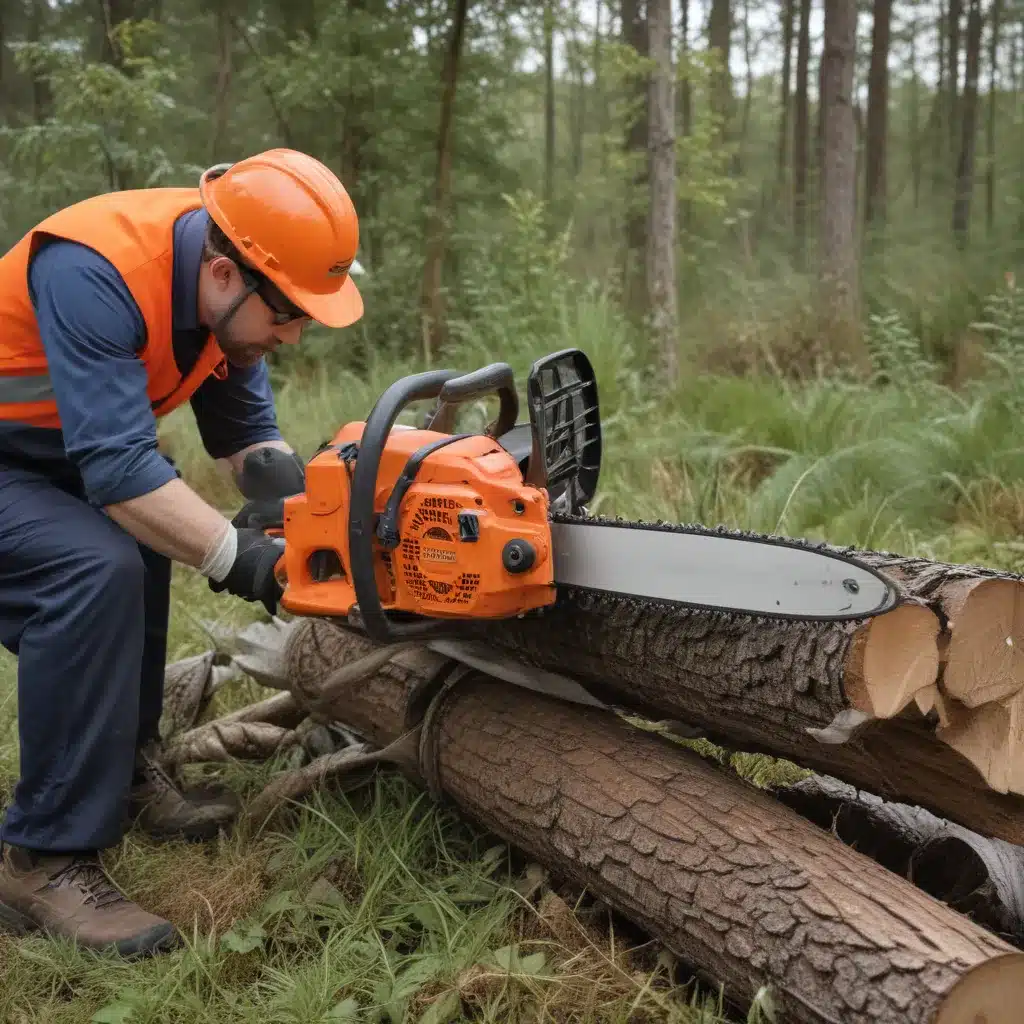
As an experienced forestry contractor, I understand the importance of managing noise levels when operating chainsaws and other logging equipment. Excessive noise not only impacts operator health and safety, but can also disrupt nearby communities and wildlife. That’s why innovative approaches to muffler and silencing design are crucial for enhancing sustainable forestry practices.
Muffler Design Approaches
The muffler is the primary component responsible for reducing noise emissions from a chainsaw’s engine. Muffler design can have a significant impact on the overall sound profile of the machine.
Muffler Configurations
Chainsaw mufflers come in a variety of configurations, each with their own advantages and tradeoffs. Simple straight-through mufflers provide basic noise reduction but have limited effectiveness. Chambered mufflers, on the other hand, use baffles and expansion chambers to better attenuate the wide range of frequencies generated by the engine. More advanced designs like multi-stage mufflers or perforated-tube mufflers can achieve even greater noise suppression.
Muffler Materials
The choice of muffler materials also plays a key role in determining acoustic performance. Stainless steel and cast aluminum are common, offering good durability and heat resistance. However, these metallic materials have inherent resonance properties that can amplify certain frequencies. Some manufacturers are exploring the use of composite materials like fiber-reinforced plastics, which can provide superior damping characteristics and reduce the transmission of structural vibrations.
Muffler Acoustics
Understanding the underlying acoustic principles governing muffler design is critical. Mufflers function by creating destructive wave interference to cancel out engine noise. Factors like chamber geometry, tube diameters, and material properties might want to be carefully optimized to target the specific frequency spectrum of the chainsaw engine. Advanced modeling and simulation tools are increasingly being used to fine-tune muffler acoustics for maximum noise reduction.
Silencing Techniques
In addition to muffler design innovations, there are other silencing approaches that can be employed to further enhance the acoustic performance of chainsaws.
Passive Noise Control
Passive noise control methods rely on physical barriers and absorptive materials to block and dissipate sound energy. This could include strategically placed acoustic insulation, vibration-damping coatings, or specialized acoustic enclosures around the engine and exhaust components.
Active Noise Control
Active noise control systems use microphones to detect engine noise, then generate counteracting sound waves to cancel out the unwanted noise. These “anti-noise” signals are produced by small loudspeakers built into the muffler or housing. Advanced digital signal processing enables highly effective real-time noise cancellation.
Hybrid Noise Reduction Systems
By combining passive and active approaches, hybrid noise reduction systems can achieve superior results. The passive elements provide a baseline of noise attenuation, while the active components dynamically adapt to changing operating conditions. This synergistic approach can deliver significant noise reductions across a wide frequency range.
Innovative Muffler Designs
Manufacturers are continuously pushing the boundaries of muffler technology to deliver quieter and more efficient chainsaws.
Advanced Muffler Geometries
Beyond traditional chambered muffler designs, some innovative approaches are exploring more complex geometries. This includes perforated-tube mufflers that create tortuous sound paths, or mufflers with integrated Helmholtz resonators to selectively cancel specific frequency bands.
Resonance Tuning
Managing the resonance characteristics of muffler chambers and components is crucial for optimal noise reduction. Advanced manufacturing techniques allow for precise tuning of these resonant frequencies to better align with the engine’s harmonic content.
Muffler Performance Optimization
Computer-aided engineering (CAE) tools enable detailed modeling and simulation of muffler acoustics. This allows manufacturers to virtually prototype and optimize muffler designs for maximum noise attenuation before physical testing. Integrating advanced computational fluid dynamics (CFD) and finite element analysis (FEA) techniques into the design process results in more refined and effective muffler solutions.
Acoustic Analysis of Chainsaws
Gaining a comprehensive understanding of the noise characteristics of chainsaws is fundamental to developing effective silencing solutions.
Noise Characterization
Detailed acoustic measurements and analysis are essential for quantifying the noise signature of chainsaws under various operating conditions. This includes identifying the dominant frequency bands, impulse noise, and tonal components that contribute to the overall sound profile.
Sound Propagation Modeling
Advanced sound propagation models can simulate how chainsaw noise radiates and attenuates through the environment. By accounting for factors like atmospheric conditions, ground absorption, and vegetation, these models help predict the impact on nearby communities and wildlife habitats.
Experimental Validation
Laboratory and field testing play a crucial role in validating the performance of muffler and silencing technologies. Rigorous acoustic measurement protocols, coupled with real-world operational assessments, provide the necessary data to refine and optimize noise reduction solutions.
Ergonomic Considerations
While enhancing the acoustic performance of chainsaws is a primary objective, it’s also important to consider the human factors and safety implications.
Operator Comfort
Excessive noise can lead to operator fatigue, stress, and hearing damage over extended periods of use. Quieter chainsaws not only improve the working environment, but also enhance user comfort and productivity.
Safety Implications
Reduced noise levels can also improve situational awareness and communication for forestry workers, enhancing overall safety on the job site. Operators can more easily hear safety warnings, environmental cues, and communicate with colleagues.
User Acceptance
Ultimately, the success of any noise reduction technology depends on its widespread adoption by forestry professionals. Careful consideration of operator preferences, ergonomics, and maintenance requirements is crucial to ensuring user acceptance and real-world effectiveness.
By leveraging innovative muffler designs, advanced silencing techniques, and comprehensive acoustic analysis, forestry contractors can significantly enhance the noise reduction capabilities of their chainsaws. This not only benefits operator health and safety, but also minimizes the environmental impact on nearby communities and wildlife habitats – a critical component of sustainable forestry practices. For more information, visit forestrycontracting.co.uk.
Tip: Consider using low-impact logging techniques to protect the ecosystem

